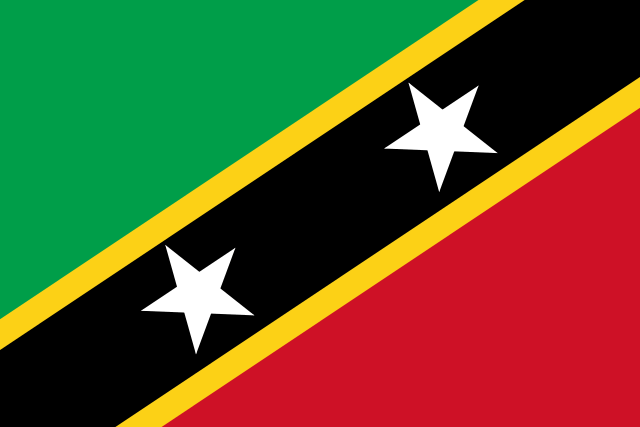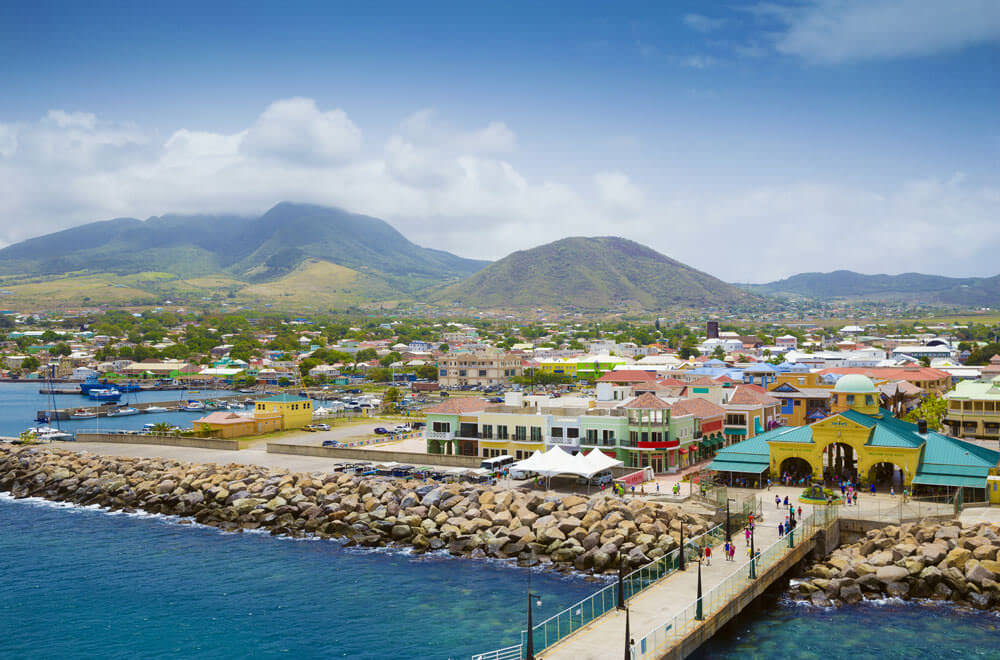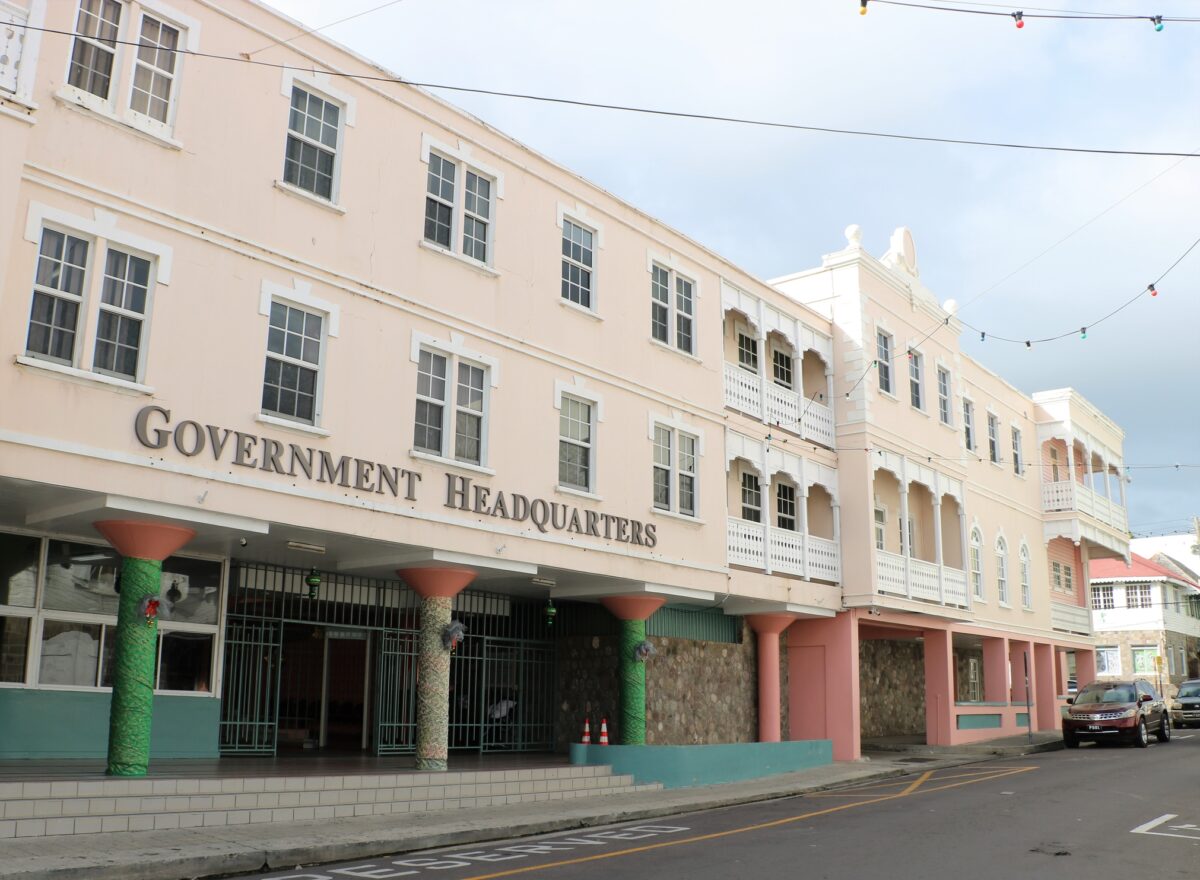St Kitts and Nevis

Capital city: Basseterre
Population: 53,537 (2021)
Land area: 261 km²
Official language: English
Legal system: British common law
Time zone: GMT-4
Currency: Eastern Caribbean dollar (XCD)
GDP: 1.00 USD Billion (2021 est.)
Main industries: Tourism, agriculture, light manufacturing
Principal exports: Low-voltage protection equipment, broadcasting equipment, other measuring instruments, electric motor parts, electrical transformers
The Federation of St Kitts and Nevis, also known as Saint Christopher and Nevis, is a dual-island nation situated between the Atlantic Ocean and the Caribbean Sea separated by a small, shallow channel towards the south end of St Kitts and the north end of Nevis called “The Narrows”. The two islands are named St Kitts and Nevis respectively and are both part of the Lesser Antilles with the country’s capital, Basseterre, located on the larger island of St Kitts. The combined area of the two islands is 261 kmsq making it the smallest country in North America.
The island of St Kitts is ovular with a land area of 176 sqkm; the centre of the island consists of three volcanic and rugged areas of ashy peaks, deep ravines and the volcanic crater of Mount Liamuiga which rises to a peak of 4,000 feet. The foothills and rolling landscape surrounding the volcanic centre is blanketed by tropical rainforest and grasslands with beaches towards the south. Nevis is a circular island in comparison; the iconic Nevis peak stands in the centre topped by dense cloud formations and towards the north stands Saddle Hill and towards the south is Hurricane Hill. Dense ranges of palm trees and coconut forests cover the western side of the island and the coastal areas are skirted by beautiful silver beaches.

Demographics
According to early 2022 estimates, the population of St Kitts and Nevis is 54,488. The population is largely of African descent (92.5%) with 3% of mixed descent. From the remaining population, 2.1% are white and 1.5% are East Indian. Of this population, 75.6% are Protestants, 5.9% are Roman Catholics, 1.8% are Hindu, 1.4% are Jehovah’s Witness, 1.3% are Rastafarian and 8.8% practice no religion.
English is the official language which is spoken widely across the nation; Saint Kitts Creole, a dialect of the Leeward Caribbean Creole English, is spoken more commonly amongst the local population. Just over one-third of the population is below the age of 25 with the population is growing at the rate of 0.61% annually. 31% of the total population lives in urban areas, the largest urban settlement being the capital of Basseterre.
History
Historical evidence shows that the original inhabitants of St Kitts and Nevis were the Kalinago (Carib) and Taino (Arawak) people several thousand years ago, and records also show American Indian inhabitants from South America settling into the dual islands in 800 AD. The first European traveller to come across St Kitts and Nevis was Christopher Columbus during his second voyage to the Americas in 1493. It is said that he named the land of “Saint Christopher” after the patron saint, though some argue that he may have named the land after himself. The name for the island of Nevis is said to have been based on the Spanish term Nuestra Señora de las Nieves (Our Lady of the Snows) and is said to have also been inspired by the clouds that drifted on top of Nevis Peak. The English settled in Nevis by 1628 and the land eventually became one of the richest territories in the Antilles due to its high-quality yields of sugarcane. The French had settled into the territory a year prior, having first arrived in 1625, and clashes between the British and French colonists, coupled with sporadic attacks by the Spanish, continued into the 17th century until the land was officially ceded to Britain under the Treaty of Utrecht signed in April 1713. The French recaptured the territory in 1782 but was re-established under British control by the Peace of Paris Treaty signed in Versailles in 1783. Despite the constant struggles and skirmishes, the territory maintained a good economic standing well into the mid-19th century.
In 1882 St Kitts and Nevis were combined with Anguilla to form a new independent state in association with Britain under the Federal Act of 1882; the islands were given fully independent self-governance with the United Kingdom in charge of defense and foreign affairs. Over the next 85 years, tensions between St Kitts and Nevis with Anguilla gradually manifested mainly due to the latter’s complaint of St Kitt’s administration’s dominating behaviour and eventually ejected the St Kitts and Nevis Police Force to establish a council of their own in May 1976. Two months after the incident, Anguilla declared independence from the former two dominions due to which it was put directly under British administration after the Anguilla Act was passed in 1971. In February of 1976, Anguilla was granted a constitution and was officially separated from St Kitts and Nevis by 1980. Following the independence of Anguilla a conference was held in London two years later to discuss the administration arrangement for Saint Kitts and Nevis. Although the topic of special provisions for Nevis remained inconclusive, the conference progressed with their decision to grant Saint Kitts and Nevis independence as a united country on 19 September, 1983.
The leader of the centre-right political party, People’s Action Movement, Kennedy Simmonds, became the first prime minister and remained in office until his party lost the 1995 elections to the Saint Kitts–Nevis Labour Party (SKNLP) leader, Denzil Douglas. Upon winning office, Douglas had to face the Nevis secession movement that had been brewing since years prior; a referendum was held in 1998 but failed as two-thirds majority was not secured by those wished to separate. Douglas remained in power until 2015, having won three more elections until he was defeated by a coalition of parties in the opposition who called themselves Team Unity and were lead by the Foreign Minister, Timothy Harris. Over time, the nation’s sugar industry declined and was usurped in terms of GDP contribution by tourism and offshore financial services.
Key Dates
1493 Christopher Columbus lands on the islands and names St Kitts
1623 The British establish their colony on St Kitts, the first in the Caribbean
1628 Colony on Nevis established
1783 France renounces claim on St Kitts under the Treaty of Versailles
1871 St Kitts, Nevis and Anguilla are combined to become one British dependency
1980 Anguilla granted a constitution and its union with St Kitts and Nevis officially severed
1983 St Kitts and Nevis jointly attain independence within the British Commonwealth with Kennedy Simmonds as prime minister.
1995 Prime Minister Kennedy Simmonds loses in a general election which he had called following a scandal involving allegations of drug smuggling; Labour Party leader Denzil Douglas becomes prime minister.
2010 Denzil Douglas wins a fourth consecutive term as premier in January
2015 The Team Unity coalition wins the February elections, ending the former ruling Saint Kitts and Nevis Labour Party’s 20-year reign.

Legal System and Government
The Federation of St Kitts and Nevis is a constitutional monarchy with Queen Elizabeth II as the Head of State. She is represented by the Governor-General who performs all royal duties such as the Royal Assent of bills and authorisation of government appointments. The Prime Minister is the leader of the political party that secures the largest number of seats in the National Assembly and has the vote of majority members. The Prime Minister is invited by the Governor-General to form the government and is the executive head responsible for government policies, including heading the Cabinet and giving recommendations to the Queen on the selection of a Governor-General. As a democratic federal state, the legislature consists of a unicameral National Assembly with 11 members elected by a plurality vote for a term of 5 years and 3 members appointed by the Governor-General. The island of Nevis has its own premier, legislation and administration, with the Nevis Island Assembly consisting of 5 members elected by universal suffrage and 3 appointed members.
The legal system followed by the Kittitian and Nevisian judicial authorities is that of English common law. The Eastern Caribbean Supreme Court is the final court of appeal in St Kitts and Nevis and is located in St Lucia. It also replaced the Judicial Committee Privy Council of the United Kingdom in 2003. High Court judges are assigned to each member state; two reside in St Kitts and Nevis. Additionally, the country is also a member of the Caribbean Court of Justice.
Economy
The cultivation of sugarcane was a nationalised industry of St Kitts and Nevis which used to be the prime source of the country’s export revenue. However, due to a decline in profits from sugarcane in the international market, the country ceased its manufacturing operations of the commodity in 2005. Post-2005, the tourism industry became an increasingly important sector of the nation’s economy, contributing 11% of the country’s pre-pandemic GDP, due to the islands’ beautiful topography of forestation, beaches and famous historical sites including the Brimstone Hill Fortress in St. Kitts which is a UNESCO world heritage site. Aside from tourism, manufacturing is also an important component of the economy though it has been declining in terms of GDP percentage, falling to 6.5% in 2020 compared to 8.5% in 2010. St Kitts and Nevis’ agriculture sector takes up about 39% of the state’s land area is devoted to crop farming of produce including sweet potatoes, peanuts and coconuts, however, the sector only contributes 1.44% GDP according to 2020 estimates. The predominant sector of St Kitts and Nevis is the services sector owing to the country’s state-of-the-art physical and social infrastructure, capacity and innovation strategies which explains the sector’s 64% contribution to GDP.
Trade
St Kitts and Nevis’ GDP at the end of 2021 was recorded to be US$0.98 billion, similar to its estimated GDP for 2020. In 2021, St Kitts and Nevis’ top export merchandise included electrical machinery and parts thereof (45.2%), ships, boats and floating structures (18.2%), optical, photographic, cinematographic, precision, medical or surgical instruments (12.4%) and beverages, spirits and vinegar (7.8%). The United States is the predominant export partner accounting for 58% of the state’s product exports. Other notable partners include Italy (16.7%) and Canada (3.3%). St Kitts and Nevis’ top imports for 2021 included mineral fuels, mineral oils and products of their distillation (13.3%), electrical machinery and parts thereof (11.0%), machinery, mechanical appliances, boilers, reactors and parts thereof (10.9%) and unspecified commodities (8.9%). Similar to its exports, the United States was also the predominant import source accounting for 55.1% of the nation’s imports, with other notable partners including Trinidad and Tobago (9.8%) and China (4.9%).
St Kitts and Nevis is a member of both the Organisation of the Eastern Caribbean States and the Caribbean Community, both of which allow Kittitian and Nevisian businesses to trade more freely within the Caribbean region. Other bilateral trade agreements include the Caribbean-Canada Trade Agreement and the Caribbean Forum’s Economic Partnership Agreement.
Investment Opportunities
St Kitts and Nevis is an ideal country to invest in; it has a sophisticated economy, well-developed infrastructure, educated and skilled labour force, a stable currency and an ideal geographical location providing easy access to the markets of North America and Europe. The government has implemented effective policies for attracting foreign direct investment that has resulted in consistent economic growth.
The country is home to many East Caribbean institutions including the Eastern Caribbean Central Bank, The Eastern Caribbean Securities Exchange, the Eastern Caribbean Regulatory Commission and The Eastern Caribbean Central Securities Registry which it is considered the financial capital of the Eastern Caribbean and thus presents investable initiatives in financial services. The government also endeavours to capitalise on the nation’s scenic beauty and historical heritage and encourage investment in the tourism industry as the global pandemic subsides. Agriculture is also another area of focus for investment, particularly in aquaculture, storage and packaging which is an attractive aspect for investors considering the regional trade agreements the country is a part of including CARICOM and the OECS. Renewable energy has become an increasingly crucial sector of development due to the nation’s ample natural resources but also its vulnerability to the effects of climate change. Other sectors in which foreign investment is being sought include the information technology, light manufacturing, ship building sectors and also international education and research academia. St Kitts and Nevis also offer the “Citizenship by Investment Program” under which individuals interested in gaining citizenship for its facilities and powerful passport, may apply for it via investing in real estate or export diversification projects.
The government of St Kitts and Nevis’ Fiscal Incentives Act provides a 15 year tax holiday, additional tax rebates for up to 5 years, exemption from customs duties on materials and equipment required for establishing enterprises, repatriation of profits and imported capital depending on arrangements by the Ministry of Finance, and tax holidays for specific types of enterprises deemed crucial for the development of the country.
Sources
https://www.britannica.com/place/Saint-Kitts-and-Nevis
https://www.worldtravelguide.net/guides/caribbean/st-kitts-and-nevis/weather-climate-geography/
http://www.caribbeanelections.com/kn/education/government_structure.asp
https://www.bbc.com/news/world-latin-america-20033469
https://www.worldatlas.com/articles/what-are-the-biggest-industries-in-saint-kitts-and-nevis.html
https://data.worldbank.org/indicator/NV.SRV.TOTL.ZS?locations=KN
https://www.refworld.org/docid/4954ce0ec.html
https://www.state.gov/reports/2021-investment-climate-statements/saint-kitts-and-nevis/